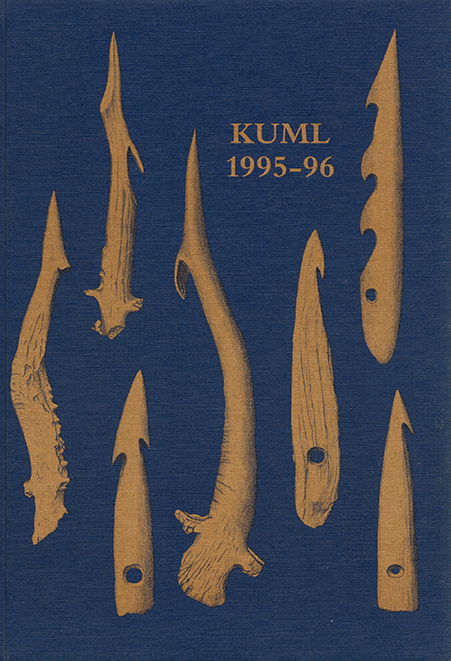Excavations at Aarhus Cathedral School in 1994-95
DOI:
https://doi.org/10.7146/kuml.v40i40.112341Keywords:
Excavation, Aarhus Cathedral SchoolAbstract
Excavations at Aarhus Cathedral School lll 1994-95
In 1994-95 archaeological excavations were conducted on the property of Aarhus Cathedral School in central Århus (fig.1). Two areas in the playground with a combined size of 32 m2, and a 72 m2 distant heating trench in the street called Skolegyde were excavated (fig. 2, 3, 6 and 10). The stratigraphy extended from Viking until recent times, but nowhere was there an unbroken sequence of layers covering the whole period (fig.4, fig.5). There are gaps of several hundred years, which are evidence of sealing or digging on the old cadaster. Scattered postholes and a few clay floors are all the traces that survive from Viking and early Medieval times. No sunken huts were found, in contrast to the earlier excavation in the most northerly part of the present playground. Just as in 1969 no trace of defensive works were found along the slope to the shore.
From the first period of the school in the early 13th century came a small brick building (bf, fig.6.). Its walls rested directly on the occupation layer without any foundations. It had been ca. 8 m long and 4 m wide and had a mortar floor. House bf was demolished in about 1400.
Excavation along the heating trench showed that here had been continuity of settlement from the 14th century probably until the school was extensively rebuilt in 1763. One or more buildings here belonged to the school. Part of the complex, whose gable faced the road, Skolegade, seems to have had a stone cellar (fig.11). Fig. 12 and 13 show the earliest pictures of the buildings of the Cathedral School in the 1600's. Probably the building along Skolegyde is the same or nearly the same as the remains found along the pipeline. A little north of house bf house bj was erected in the 15-1600's. It rested on a foundation of large granite blocks, and the floor was cobbled with small stones set in clay (fig.2).
The finds were mostly pottery, iron, and waste from comb production. Attention is called to a crossbow bolt, an arrowhead, an iron knife, a horseshoe, some nails and rivets, a biconical and two conical spindle whorls, two bone pins, and a copper coin of the 14th century. One of the more unusual finds was a silver coin from the reign of Svend Estridsen in the 11th century (fig.7). More unique was an asymetrical double comb, that seems to have been well adapted to looking after the beard (fig.8, fig.9). The comb is of elk or reindeer antler, materials that did not occur naturally in Medieval Jutland, but did in Norway, where seven combs of the same type have been found. Three more are known from the Norse part of Caithness in Scotland, and one from Schleswig.
Hans Skov
Downloads
Published
How to Cite
Issue
Section
License
Fra og med årgang 2022 er artikler udgivet i Kuml med en licens fra Creative Commons (CC BY-NC-SA 4.0).
Alle tidligere årgange af tidsskriftet er ikke udgivet med en licens fra Creative Commons.


